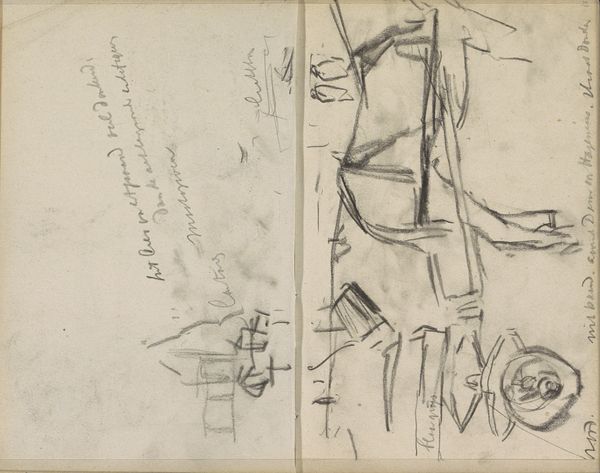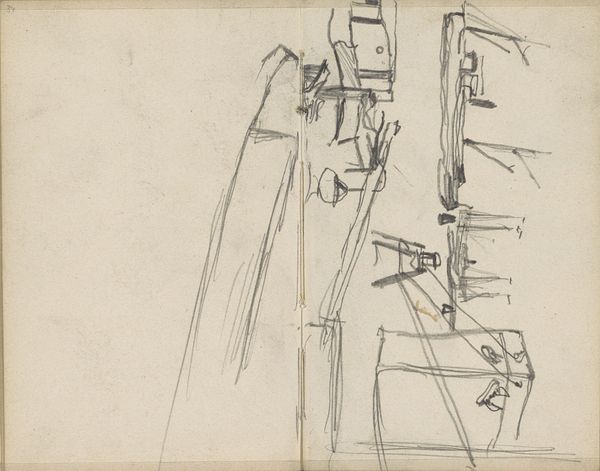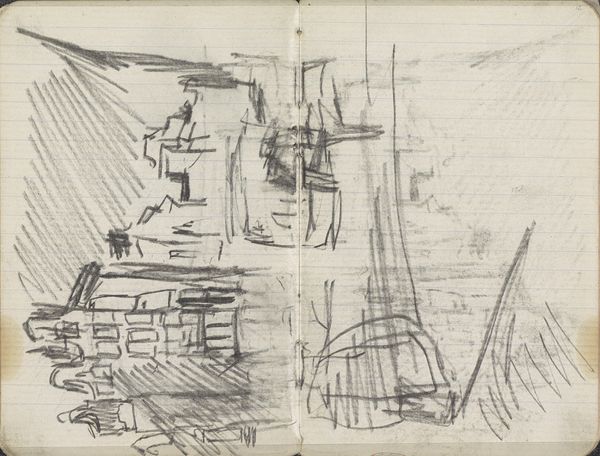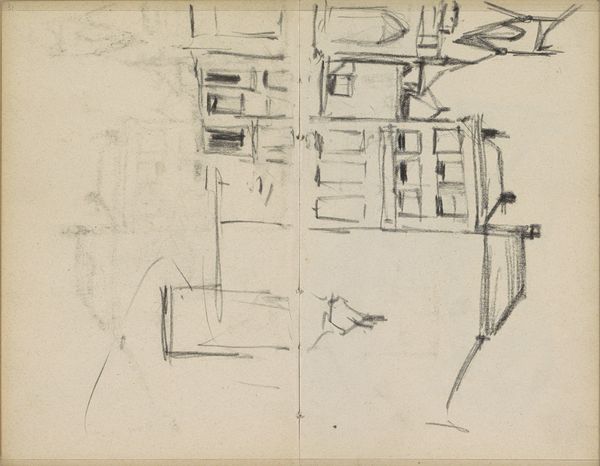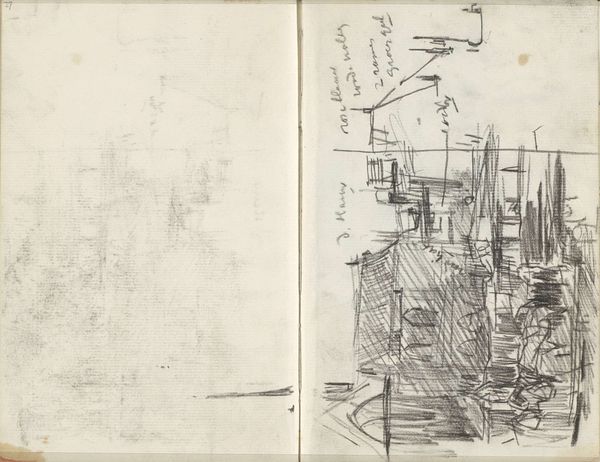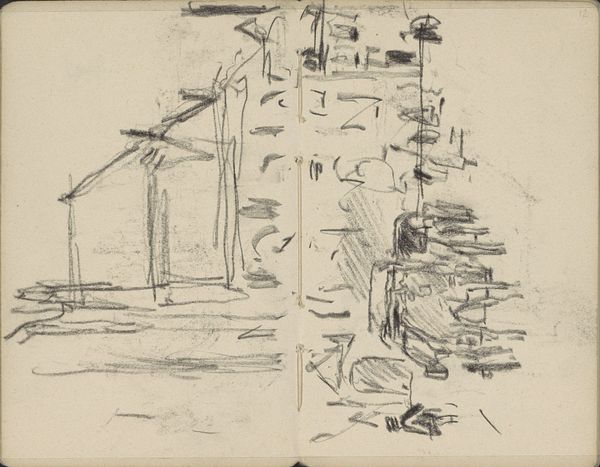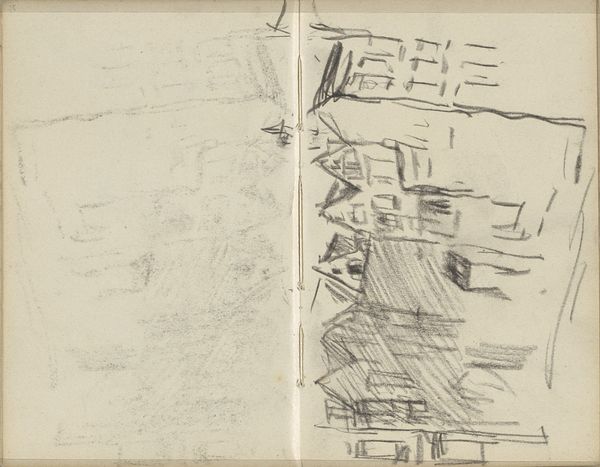
Drie rijtuigen op het Leidseplein te Amsterdam bij regen c. 1886s
0:00
0:00
georgehendrikbreitner
Rijksmuseum
drawing, pencil
#
drawing
#
quirky sketch
#
impressionism
#
sketch book
#
hand drawn type
#
landscape
#
personal sketchbook
#
idea generation sketch
#
sketchwork
#
ink drawing experimentation
#
pencil
#
square
#
sketchbook drawing
#
cityscape
#
storyboard and sketchbook work
#
sketchbook art
Copyright: Rijks Museum: Open Domain
Curator: Let’s take a moment with this piece titled "Drie rijtuigen op het Leidseplein te Amsterdam bij regen," which translates to "Three Carriages on Leidseplein in Amsterdam in the Rain." It’s attributed to George Hendrik Breitner, dating back to approximately the 1880s. This drawing, rendered in pencil and ink, is part of the Rijksmuseum's collection. Editor: Whoa. First impression? It’s got this beautifully raw, sketchy vibe, like capturing a fleeting moment in a rain-blurred city. It feels really immediate. The perspective’s almost tilted, adding to that feeling of motion. Curator: Breitner's work often explored the realities of urban life, moving away from romanticized depictions. His commitment to capturing the everyday, especially in Amsterdam, aligns with broader shifts in art toward realism and later, impressionism. This sketch embodies that focus, almost like a social snapshot. Editor: I love that “social snapshot” idea. It's less posed portrait, more of a snatched photo. Look at the carriages, more hinted at than fully rendered. And the rain—you feel it even though it's just a few suggestive lines. It makes you wonder, who are these people in the carriages, and what's their story? It seems like a starting point, idea generations, a private sketchbook... Curator: The quick strokes and notations do suggest a preliminary study, a glimpse into the artist’s process. If we delve into the social context, this period witnessed rapid urbanization, and transportation played a pivotal role. Breitner is not just depicting a scene, but engaging with themes of modernity, class, and the changing landscape. Notice, too, the inclusion of text, perhaps capturing impressions in written as well as visual form. Editor: Yeah, the writing—almost indecipherable, yet it adds another layer. It’s like peeking into his thoughts, his notes about light, weather. And to think this bustling scene, now frozen in time. Do you think he went to the Rijksmuseum expecting for so many people to dissect what he put on a piece of paper so long ago? It makes you wonder if you did not show up this morning, if you saw that sketchbook on the market, would you even bother stopping by to see it, maybe not, who knows... The mystery is what pulls you in... Curator: That sense of intimacy and ephemerality you pointed out, is exactly what Breitner aimed for, an intersection of technique, social observation, and, I think, quiet defiance against academic tradition. Editor: Absolutely. Seeing this makes me wanna grab a sketchbook, run out into the rain and just try to capture something. To try, no expectations... Just seeing where a sketch and a few lines can bring you...
Comments
No comments
Be the first to comment and join the conversation on the ultimate creative platform.


